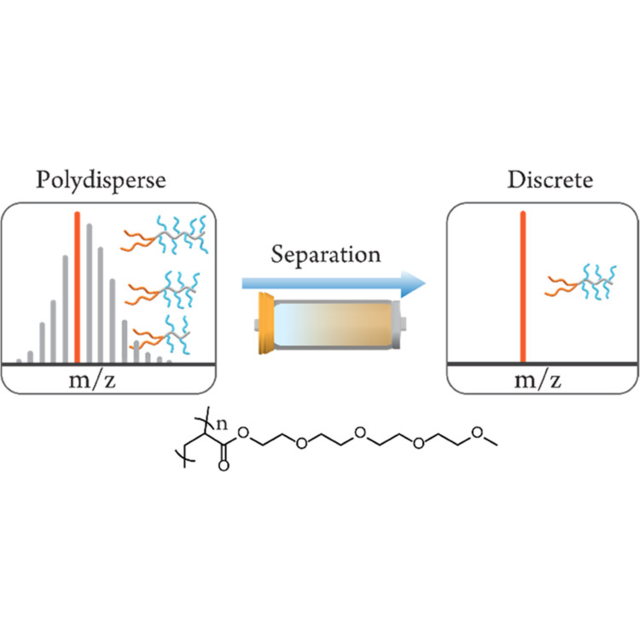
Discrete Libraries of Amphiphilic Poly(ethylene glycol) Graft Copolymers: Synthesis, Assembly, and Bioactivity
Junfeng Chen, Aoon Rizvi, Joseph P. Patterson, and Craig J. Hawker
J. Am. Chem. Soc. 2022, 144, 42, 19466–19474
Abstract: Poly(ethylene glycol) (PEG) is an important and widely used polymer in biological and pharmaceutical applications for minimizing nonspecific binding while improving blood circulation for therapeutic/imaging agents. However, commercial PEG samples are polydisperse, which hampers detailed studies on chain length-dependent properties and potentially increases antibody responses in pharmaceutical applications. Here, we report a practical and scalable method to prepare libraries of discrete PEG analogues with a branched, nonlinear structure. These lipid-PEG derivatives have a monodisperse backbone with side chains containing a discrete number of ethylene glycol units (3 or 4) and unique functionalizable chain ends. Significantly, the branched, nonlinear structure is shown to allow for efficient nanoparticle assembly while reducing anti-PEG antibody recognition when compared to commercial polydisperse linear systems, such as DMG-PEG2000. By enabling the scalable synthesis of a broad library of graft copolymers, fundamental self-assembly properties can be understood and shown to directly correlate with the total number of PEG units, nature of the chain ends, and overall backbone length. These results illustrate the advantages of discrete macromolecules when compared to traditional disperse materials.